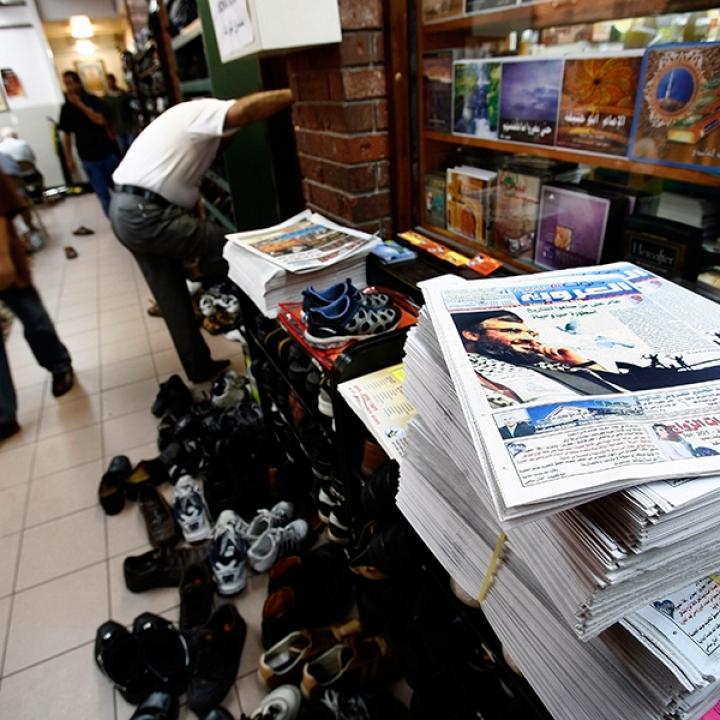

The anniversary of a deadly Hezbollah attack in Argentina is a reminder that the group's terrorist plots have included operational links and targets in New York.
Next week, European leaders will meet to decide whether to designate the military wing of Iranian-backed Hezbollah a terrorist organization. Banning the group in Europe is long overdue, but the issue is only now on the agenda due to the Hezbollah bus bombing in Burgas, Bulgaria, a year ago today. Only after a successful Hezbollah strike on European soil has the issue of banning it in Europe -- and only the group's military wing, at that -- risen to the attention of European lawmakers.
But today's date was significant in the annals of Hezbollah long before last year's attack in Bulgaria: Nineteen years ago today, Hezbollah operatives and Iranian agents blew up the AMIA Jewish community center in Buenos Aires, killing 85 and injuring 150 others. It was Hezbollah's second bombing in the city in less than two years. And it appears that Hezbollah operatives in New York City played a part.
Most important, the group's global reach today seems to be as potent as ever.
In the weeks leading up to the 1994 attack, a flurry of calls was made to coordinate final details. Most of the calls were made within South America, but a few were directed through a New York City switchboard.
On July 1, 1994, a call was placed from the pay phone near the AMIA building to a New York number. The call was presumably from Samuel el-Reda, who prosecutors concluded coordinated the Hezbollah cells in Buenos Aires and in the tri-border area where Argentina, Brazil and Paraguay meet.
Eleven days later, another call was placed to the New York number, this time from a pay phone less than two miles west of the AMIA building. A third call was placed to that number on July 17, the day before the bombing. Still another was made from the same phone to a line investigators identified as a Hezbollah communication center in Beirut.
These calls and others reveal what investigators concluded was a command-and-control communication system among Hezbollah operatives on the ground in Buenos Aires and coordinators in the tri-border area, New York and Beirut.
Later on July 17, Mohsen Rabbani placed a call on his cell phone from the vicinity of the garage where the car bomb was parked -- just blocks from the AMIA building -- to Samuel el-Reda at the al-Tauhid mosque in Buenos Aires. The call lasted a mere 26 seconds, "just the amount of time," prosecutors would later comment, "that would have been necessary to confirm the success of a key phase of the operation."
Prosecutors concluded that Rabbani, an Iranian who lived in Argentina for 11 years and played a key role in the Islamic Republic's intelligence operations in South America, was the driving force behind Iran's intelligence efforts in Argentina -- and the primary architect of the AMIA plot.
Rabbani, who began laying the groundwork for his spy network after arriving in Argentina in 1983, apparently had ties to other operations in New York as well. According to Argentine prosecutor Alberto Nisman and federal court documents in Brooklyn, Rabbani helped four men who were plotting to bomb JFK International Airport in 2007 and who sought technical and financial assistance for the operation, code-named "Chicken Farm."
One co-conspirator in that plot was Kareem Ibrahim, an imam and leader of the Shiite Muslim community in Trinidad and Tobago. During cross-examination at trial, Ibrahim admitted that he advised the plotters to approach Iranian leaders and to use operatives ready to engage in suicide attacks at the airport. In one of the recorded conversations, Ibrahim told Russell Defreitas -- a plotter who was a JFK baggage handler and a naturalized US citizen -- that the attackers must be ready to "fight it out, kill who you could kill and go back to Allah."
Documents seized from a house in Guyana belonging to another co-conspirator, Abdul Kadir, demonstrated that he was a Rabbani disciple who built a Guyanese intelligence base for Iran much like his mentor had built in Argentina.
In 2011, evidence emerged suggesting that Rabbani was still doing intelligence work in South America. One Brazilian official commented, "Without anybody noticing, a generation of Islamic extremists is appearing in Brazil." Last summer, the State Department warned that "Hezbollah could attack in Europe or elsewhere at any time with little or no warning." And just a few weeks ago, the department's annual terrorism report noted a "marked resurgence" of "Iran and Hezbollah's terrorist activity."
When they meet next week, European leaders should follow the evidence from Burgas, to Buenos Aires, to New York and beyond -- and ban Hezbollah as the terrorist organization it is.
Matthew Levitt directs The Washington Institute's Stein Program on Counterterrorism and Intelligence and is author of the forthcoming book Hezbollah: The Global Footprint of Lebanon's Party of God.
New York Post



